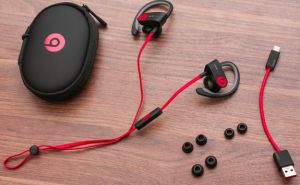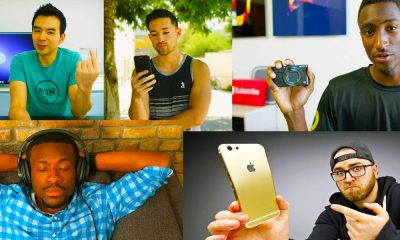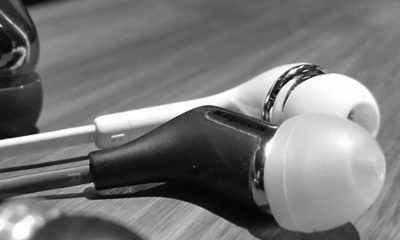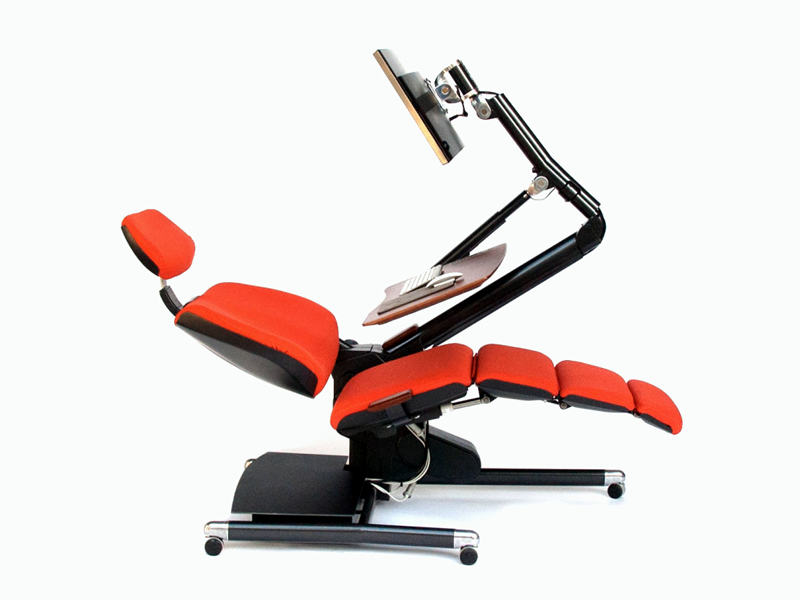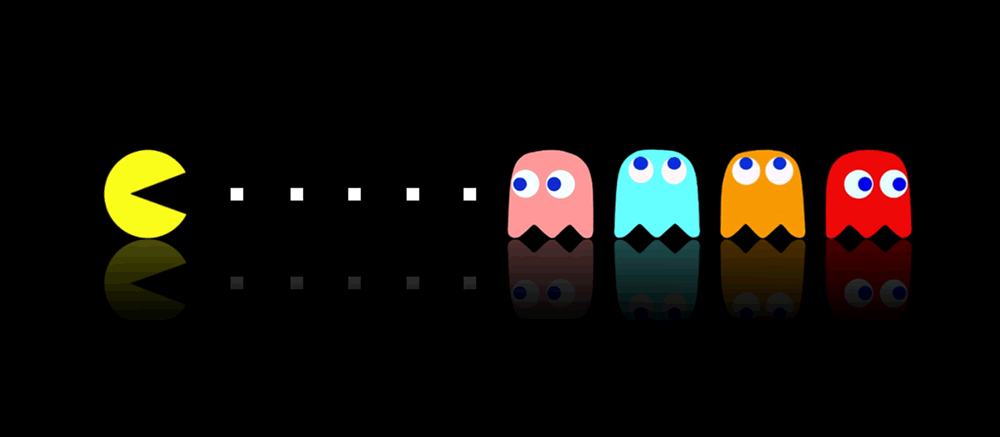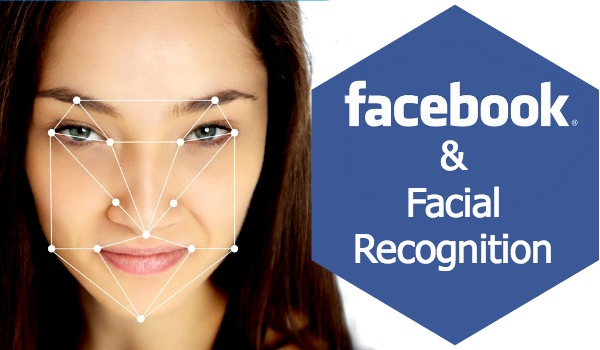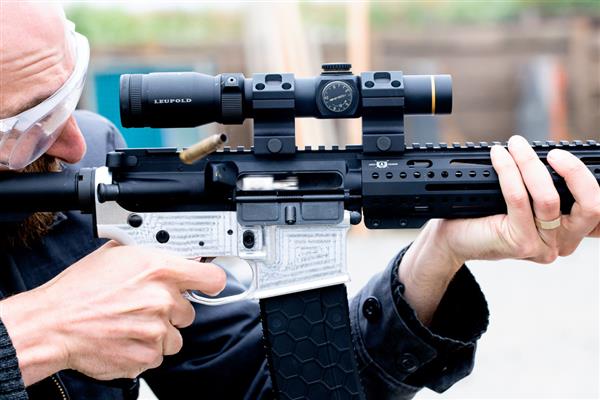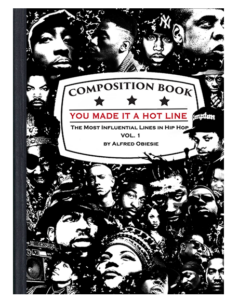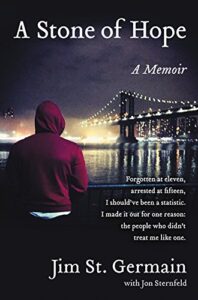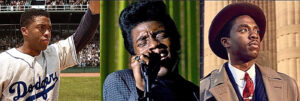Entertainment
Wireless For Workouts Without Breaking The Bank?
Published
9 years agoon
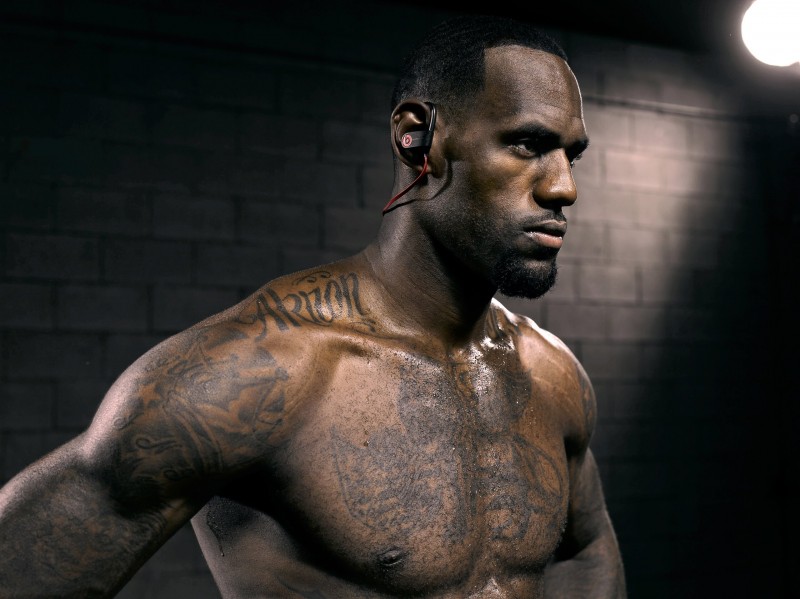
In recent weeks, the topic of wireless headphones has been the focus of discussion in various Facebook running groups that I belong to… more specifically, which wireless headphones are the best.
The Powerbeats 2 Wireless Earbuds by Beats by Dre appear to be the most purchased and most recommended. While it is hard to debate the sound and build quality of Beats by Dre products, one can always ask; is it necessary to spend $200 in order to get a quality pair of headphones for my work outs?
Enter the Antec Gain and the Jumbl Bluetooth Receiver. At $35.00 and $24.95 (U.S.) respectively, from Amazon.com, these little devices offer you the option of turning ANY pair of headphones (with a standard 3.55mm male connector) into “wireless” ones.
Purchased about 2 years ago, the Antec Gain was my first introduction into Bluetooth receivers. I originally purchased this because I like listening to music at work and my job is 1) noisy, so I needed headphones and 2) requires that I move around a lot. Being tethered to a phone/mp3 device via a pair of wired headphones was not an option. The two most common problems I faced were the headphone wires constantly getting entangled in something and my phones’ battery dying on me from continuous play throughout the day. This one little device solved both of those problems allowing the mobility to move around and charge my phone simultaneously. I was so pleased with this device at work I then began taking it out on my daily runs.
Over the years I have really only found a few shortcomings with this device. First, the user interface is completely flat. All of your controls are there for volume up/down, fast forward and reverse, pause and call answering, but unless you are looking directly at the device, it is going to take a tiny bit of a learning curve to figure out. Especially because the power on/off, pause, call answering, and Bluetooth Pairing are all, seemingly, one button. Second, the unit does not feel very sturdy. 6 months into use and I broke the clip on the back that allows you to attach it to your clothing. Lastly, and most important to runners, is the battery life. I am not sure under what test conditions or set of parameters companies come up with for the claims of supposed battery life but Antec says that their device will give you 6 hours of use. Right now you are probably making the same face I made when I first read that. The truth is you are going to get closer to 3 ½ to 4 hours of use on a single FULL charge. I would recommend this to a faster runner if you are into distances greater than 13.1 miles and you like to listen to music. On the plus side, the Antec Gain has a hold button that will keep you from accidentally pressing fast forward or rewind or unintentionally making a phone call. The other plus is that it charges with a standard micro-usb cable. Charging time for the Antec Gain is about 2 hours. Lastly, a usb cable and a pair of headphones were included in the deal so for $35.00, you are ready to run right out of the box.
As for the Jumbl, I recently purchased this product after looking for something that would give me a longer battery life. I’m not quite a sub 4-hour marathoner just yet. Unlike the Antec, I find that the Jumbl’s interface is slightly more user friendly. This device also feels a lot sturdier, specifically the feel of the buttons when you depress them and also the clip that attaches to your clothing is much stronger with no moving parts so it has less of a chance of breaking or malfunctioning. With claims of a 10+-hour battery life on a full charge this seemed like a no brainer. While it came with a small charge right out of the box, I decided to juice it up all the way before seeing how long it would last. After about 2 hours of charging, I paired the unit with my phone in a matter of seconds. My first run through was not continuous but I did have the unit on (even if on pause) for 7 hours before the audible ‘your battery is dying’ beep started to chime. Not bad, huh? The second run was tested at work and I clocked it at 5:52 (H:MM). Not quite the purported 10+ hours but certainly better than 3 ½ to 4 from Antec. This unit also came with a usb cable to charge it but unfortunately it is proprietary. So if you did buy this device it would behoove you to contact Jumbl to see how much an extra charging cable will cost you in case the one it comes with breaks or is lost. Also, the Jumbl does NOT include a set of headphones, so take that into consideration should you choose to purchase it.
While I have plenty of headphones lying around the house, I paired my Jumbl with an OEM pair of Samsung headphones that I found on Amazon as well that were 2 pair for $11.00, can’t beat that. My total Jumbl kit, $35.00.
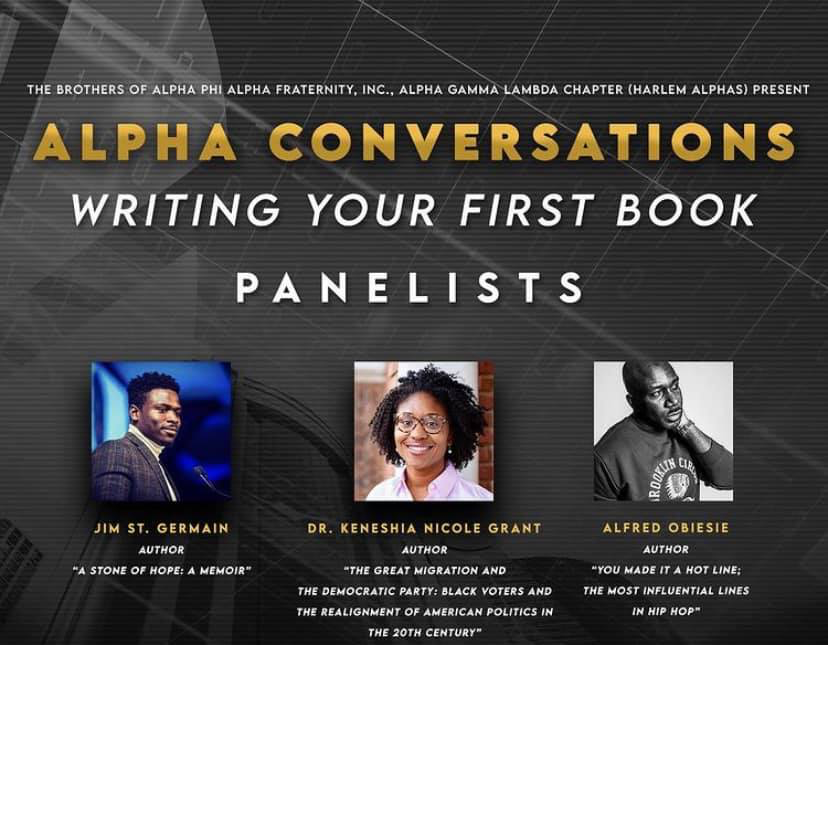
I had the distinct pleasure of participating in a panel discussion on writing your first book, presented by the Harlem chapter of Alpha Phi Alpha Fraternity Inc. Alongside Jim St. Germain, Author – A Stone of Hope: A Memoir and Dr. Keneshia Nicole Grant, Author – The Great Migration and the Democratic Party: Black Voters and the Realignment of American Politics in the 20th Century. We opined on pain points, benefits and strategies regarding our inaugural voyages into authorship. Feel free to watch for your self and I hope this provides some insight to all those looking to make the same voyage. Enjoy!
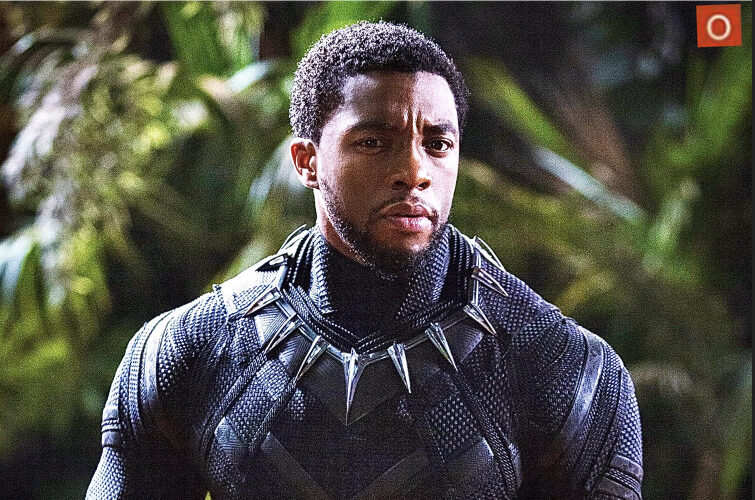
It is clear that Chadwick Boseman chose iconic roles like Thurgood Marshall, James Brown, Jackie Robinson and Black Panther with deliberate intent and for a specific purpose. In an age where positive roles for Black actors is often sparse, Chadwick managed to land and portray historical figures that made most respect his talents if not revel in his ability to transition effortlessly for one character to another. Even I had to give his African accent a solid B+ (It’s the highest grade the Nigerian Standards Bureau can give for an African accent to a non African FYI.)
Holding out and preparing for these dynamic roles came with both great frustration and incredible resolve I’m certain. Not to mention the taxing ordeal of battling Colon Cancer as the grueling scheduling of filming and increasing responsibility for positive representation loomed. Even under extreme duress, Chadwick’s commitment to others appeared to outweigh his own tribulations, unbeknownst to us all.
Black Panther may have been just a movie to some and that may be because some can easily rattle off 10 movies with a king of non Af-Am origin. It represented a lot more to others. Albeit imagined, imagery on cinema often accomplishes more to augment the social narrative and society itself than actual reality. If negative stereotypes influence perception then positive ones absolutely have the same converse effect.
Even in jest, the cultural misappropriation of raisins in potato salad on SNL skits directly spoke to the tampering of black culture to which T’challa championed, represented and aptly responded “Oh hell Nah Karen!”
If you don’t understand the relevance of representation, it’s probably because you are thoroughly represented. After all, no one is ever grateful for every breath they take until they are gasping for air.
R.I.P Chadwick Boseman. Thank you for breathing life into the possibility of Black excellence.
Article
10 Easter Eggs of Segregation in Lovecraft Country Episode 1
Published
4 years agoon
August 19, 2020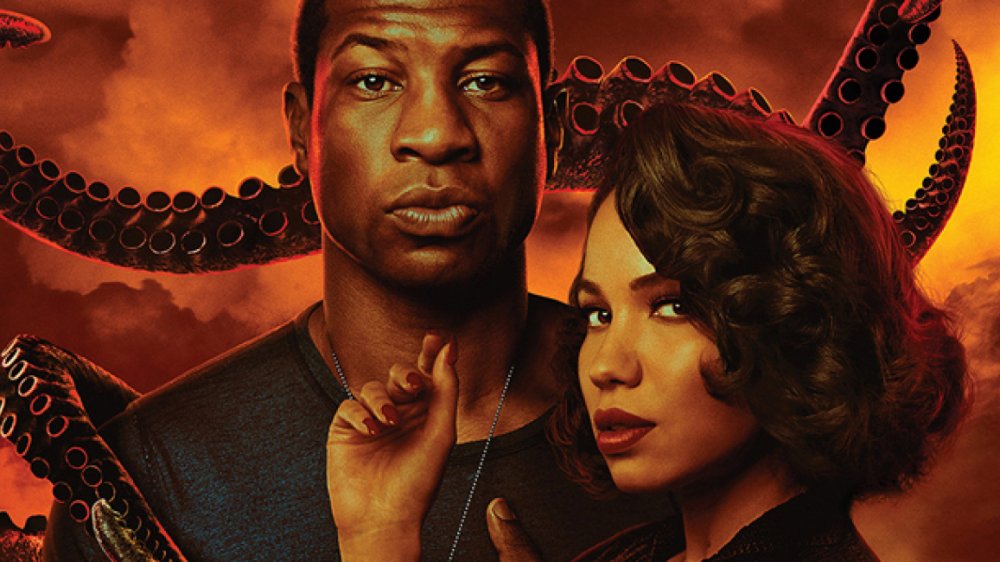
We’re all familiar with movies hiding easter eggs throughout their films sending winks and nods to pop-culture references. Sometimes it will be a tip-of-the-cap to an author, actor, or creator. Sometimes it is paying homage to an inspiring series, book, or film that’s near and dear to the director’s heart. This week I’ve seen a first. A T.V. series that has several easter eggs depicting segregation and oppression that only eagle-eyed aficionado’s of the black struggle might have caught on to.
Lovecraft Country is littered with important details that would fly over many people’s heads, and as I watched it again, I caught more nods to the true oppression of many African-Americans during the post-World War II era.
As a film buff, nothing makes me happier than watching a review, breakdown, or hidden easter egg video on a TV show I enjoy. Yesterday I did the same with Lovecraft Country, and while many of the melanin-deficient reviewers on youtube touched on the themes of literature, horror, and fantasy, many understandably missed some of the most important historical references.
Here are 10 Easter Eggs of Segregation in Lovecraft Country Episode 1.
1. H.P. Lovecraft’s little poem.
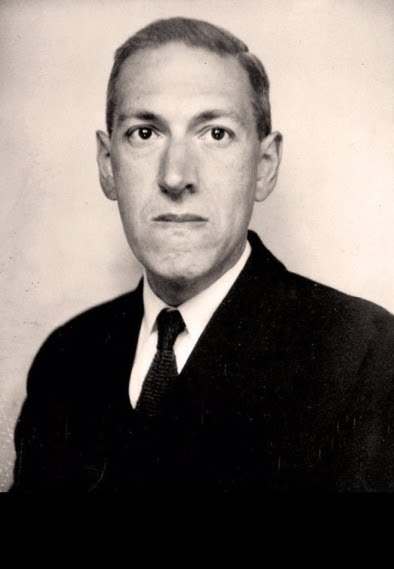
While we all know H.P. Lovecraft as an innovator of modern horror, fiction, and fantasy in literature, many people (including myself) didn’t know about a poem he wrote that spoke horribly about African Americans. Lovecraft Country alludes to the poem, but never recites it. Once they mentioned the title, I went straight to my Google Search. Below is the poem called: On the Creation of N*****s (1912)
When, long ago, the gods created Earth
In Jove’s fair image Man was shaped at birth.
The beasts for lesser parts were next designed;
Yet were they too remote from humankind.
To fill the gap, and join the rest to Man,
Th’Olympian host conceived a clever plan.
A beast they wrought, in semi-human figure,
Filled it with vice, and called the thing a N****r.
I’m sure Jackie Robinson beating the S**T out of Cthulhu at the beginning of the episode was a collective middle finger from the black community to Mr. Lovecraft.
2. Seating for Black People

Scene from episode 1
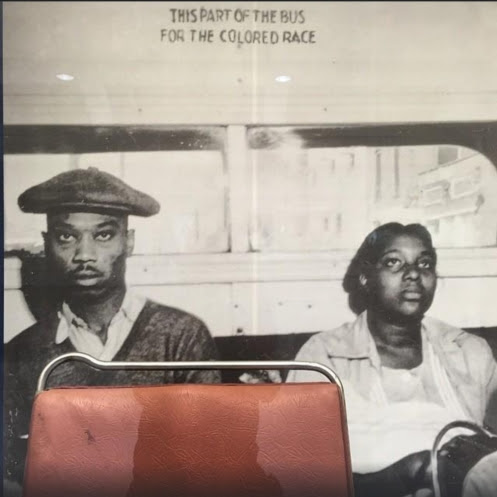
Actual photo of a segregated bus
While this may not come as a surprise to many of you, a lot of people are ignorant to the fact that, yes, black people were made to sit in the back of the bus. Many know the story of Rosa Parks’ defining moment, but for decades this was the way of life for black people. Where insult to injury is predicated in the show is when the bus breaks down and the bus driver gets a local pick-up truck driver to ride the stranded passengers into the city. Immediately in the next scene, the only two black passengers were seen walking down the road into Chicago.
3. Propaganda for the Negro Soldier
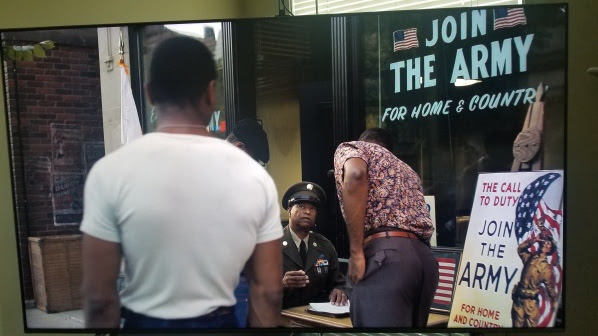

In Lovecraft Country, the above poster is not shown in this episode, but instead, it’s a black soldier telling other young black men that if they enlist, they can see the world. While Atticus walks by the soldier, there’s a glance of recognition as if Atticus was once one of those impressionable young men, and he knows their being lied to. Black men had to be enticed to enlist by different methods than whites because it was hard to show patriotism to a country that still to that day had kept them oppressed. So, they would show a poster of Joe Louis joining the fight…why don’t you? Get to see the world! Little did they know seeing the world would involve PTSD, death, and despair.
4. The Negro Motorist Greenbook

Scene from episode 1 depiction of the Green-Book
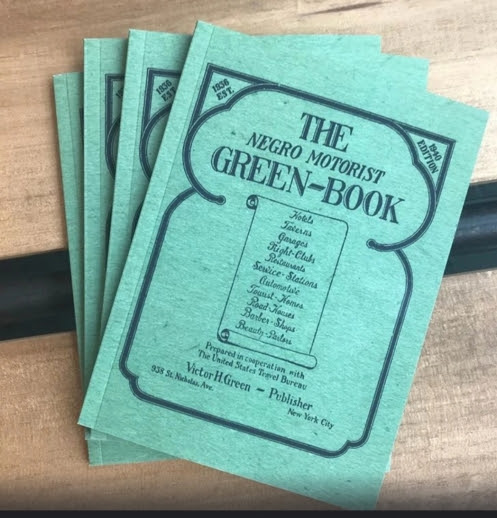
Actual Green-Book
The synopsis according to IMDB.com is: “Lovecraft Country follows Atticus Black as he joins up with his friend Letitia and his Uncle George to embark on a road trip across 1950s Jim Crow America in search of his missing father.” While this is true, it’s not the whole story. Why are they embarking on this trip? It’s to help update what many people may know as, The Negro Motorist Greenbook. Yup, just like the movie, The Greenbook. If you don’t know, this book was originated by Victor Hugo Green as a travel bible for African Americans. It provided details of safe roads to travel, places for food, repairs, and lodging where they wouldn’t be turned away or even worse, assaulted.
5. James Baldwin’s monologue on racial divide

During one of the scenes in Lovecraft Country, we see a montage of our protagonist’s road trip. In the montage we see different moments where they face discrimination, others facing discrimination, and the hardships of ignorant people with all the privilege in the world monopolizing on their entitlements. Usually, during movie montages, a composer would play a score to envoke emotions during the collection of scenes. Lovecraft Country went in a different direction. Instead, they played the monologue of James Baldwin’s renowned speech at Cambridge University where he debated with William Buckley on the subject of the United States racial divide. James Baldwin was a brilliant playwright, novelist, speaker, and activist that eloquently described the plight of the black man as it still stands today. Merged with the scenes during the montage, it speaks volumes about the state of America.
6. Ice Cream stand Scene
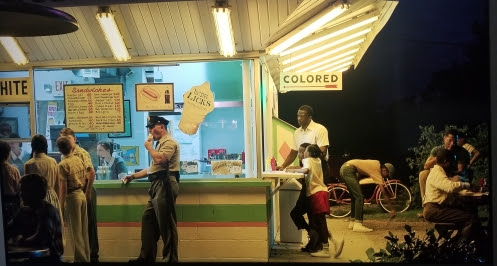
Scene from episode 1

Gordon Sparks photograph
In one of the scenes in the montage, we see a black man and his children waiting at an ice cream stand for service. Right over them is a sign that says “colored” and on the other side of the stand is a group of white people with ice cream being tended to by the servers. This scene looked extremely familiar to me. When I did some research, I realized this scene was based on a famous photograph by Gordon Parks, photographer and journalist who well-documented scenes of the segregation and civil rights era. Years ago I saw his work in its full brilliant quality at the High Museum in Atlanta. The color and detail brought a realism that a black-and-white photo could never do. It made this a real thing.
7. Mother and daughter under the neon sign
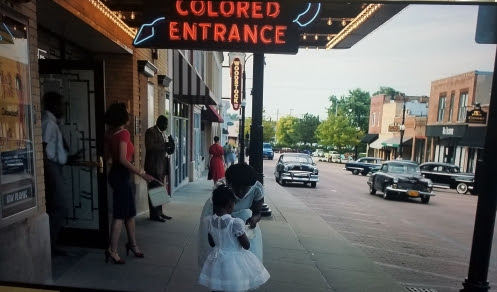
Scene from episode 1
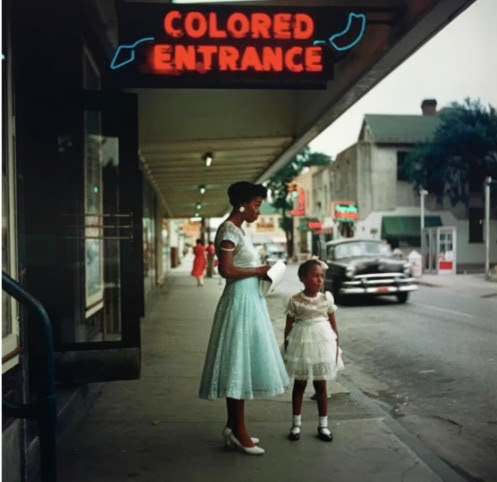
Actual photo
This scene once again pays homage to another photograph by Gordon Parks. A mother and her daughter dressed elegantly as if they were going to church, standing under a large neon sign that says ‘Colored Entrance’.
8. The billboard across from the gas station

Scene from episode 1

Advertisement the billboard is based on
While Atticus and company are at a gas station filling up their car, they are approached by a gas station attendant pretending to be a gorilla to mock them. Leticia holds Atticus back from approaching the man as the attendant intensifies his ignorant behavior and she forces Atticus into the car. As they pull off, you can see a Billboard for Aunt Jemima in the background. Aunt Jemima has always been a misrepresentation of black culture through the lens of the white man and advertised to his fellow man as the overall perception of black people. The image of Aunt Jemima is a source reflection of the learned behavior of the gas station attendant.
9. Sundown towns
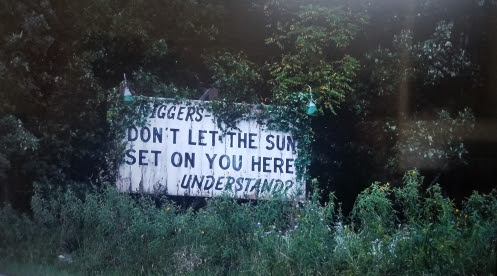
Scene from episode 1
Two years ago was the first time I’ve ever heard of a Sundown Town. No, not through a history book, but as a warning about staying too late in a little town in Texas that exists today! If I didn’t hear about this first hand, I would’ve thought it was a theme of the past, but no. There are currently county’s that do not condemn the abuse of black people once the sun goes down! While the billboard here might be a relic from the past, Sundown Towns are definitely alive and well across America!
10. White walls
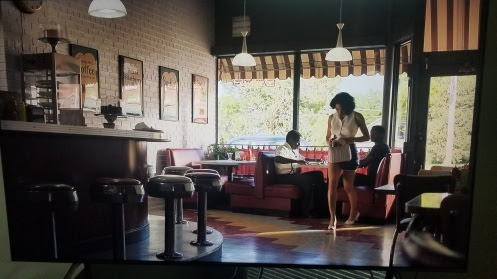
Scene from episode 1
Not only is this one telling, but it also holds all kinds of subliminal messages. While the group finds a Green book safe haven for dining called Lydia’s, they are surprised to find the restaurant is now called, Simmonsville Dinette. Still, they walk in and are greeted by unwelcoming faces. While the server goes to the back for what seems like their coffee orders, Atticus realizes that the walls are painted white. He asks his uncle to remind him why the white house was white. His uncle tells him about the war of 1812 when British soldiers torched it and when slaves were tasked to rebuild it, they had to paint it white to cover up the burn marks. This tells us two things. Lydia’s restaurant was burnt down and rebuilt by trespassers (obviously for being a safe haven for blacks in this all-white town) and the blackness of this restaurant was erased and covered up by the ‘white’ paint. My goodness, I could go on and on about this one!
I was expecting this series to be littered with easter eggs, but knowing they have incorporated easter eggs specifically about the black movement and struggles has me fired up to see what else is in store for these characters. Did you see any easter eggs that I missed? Comment and let me know.

